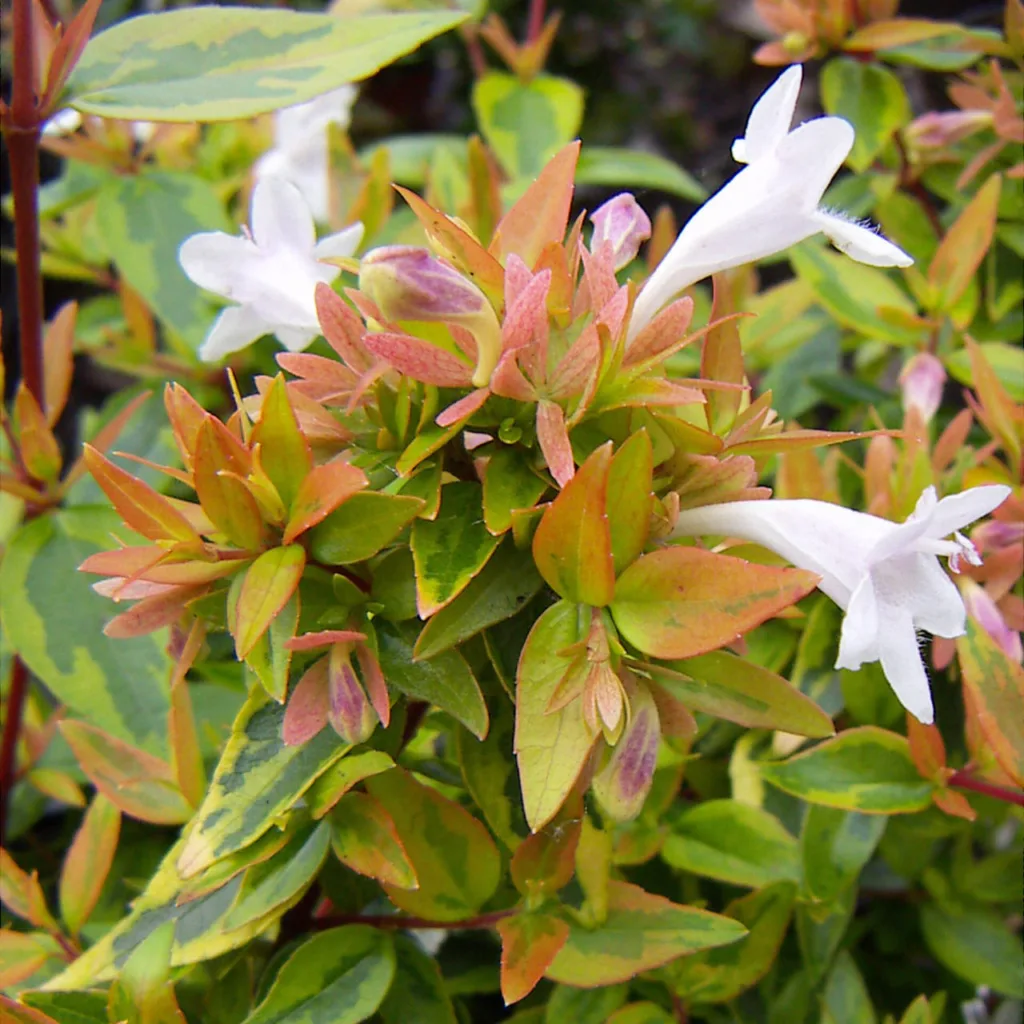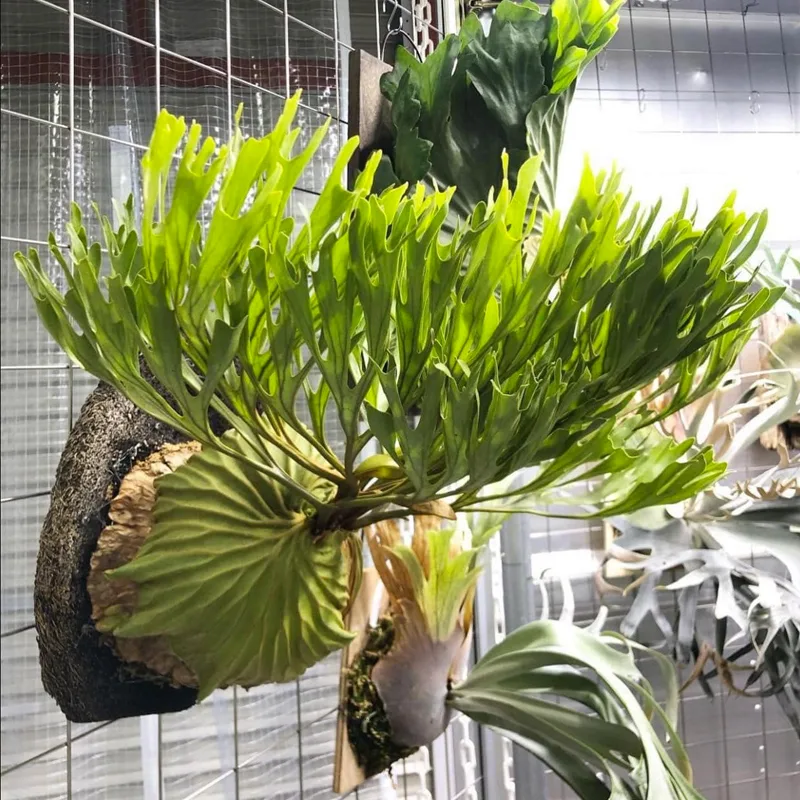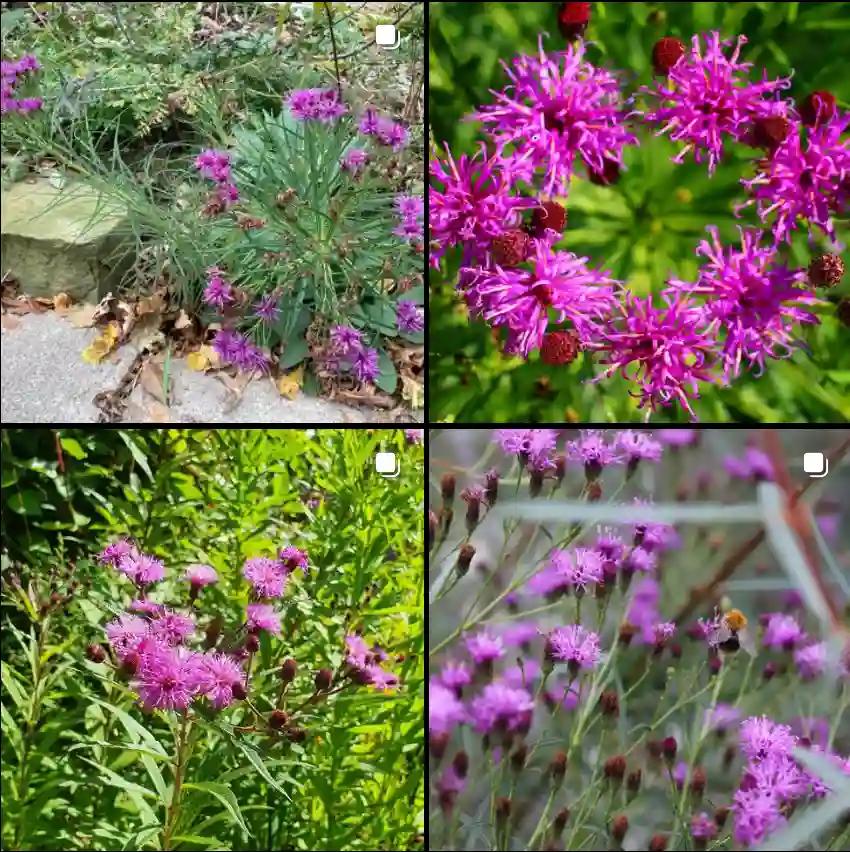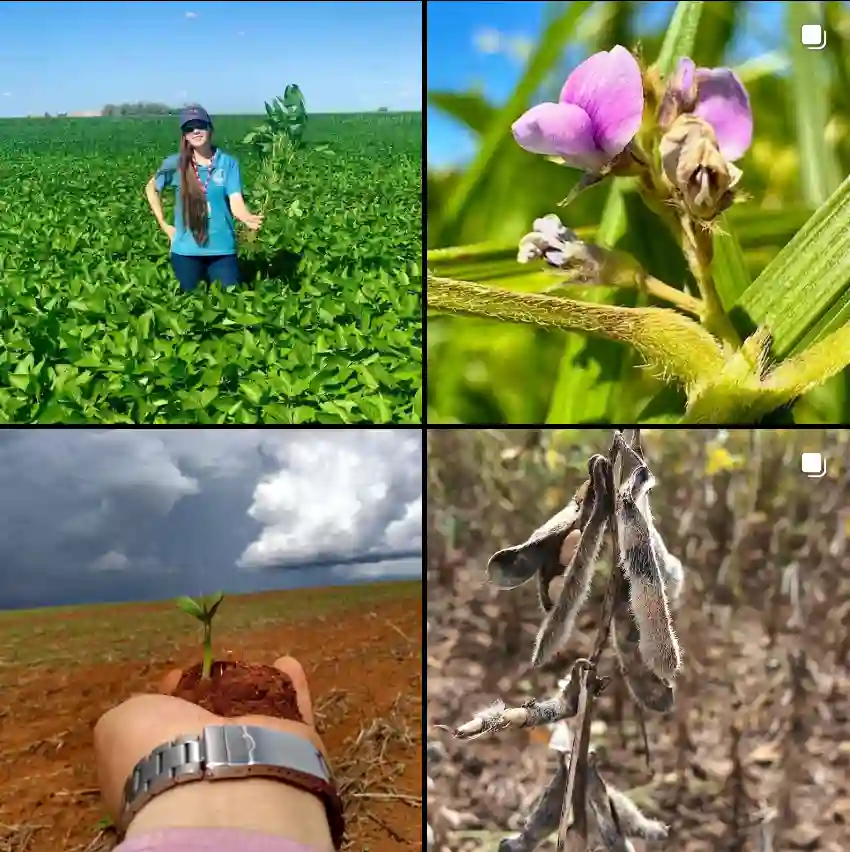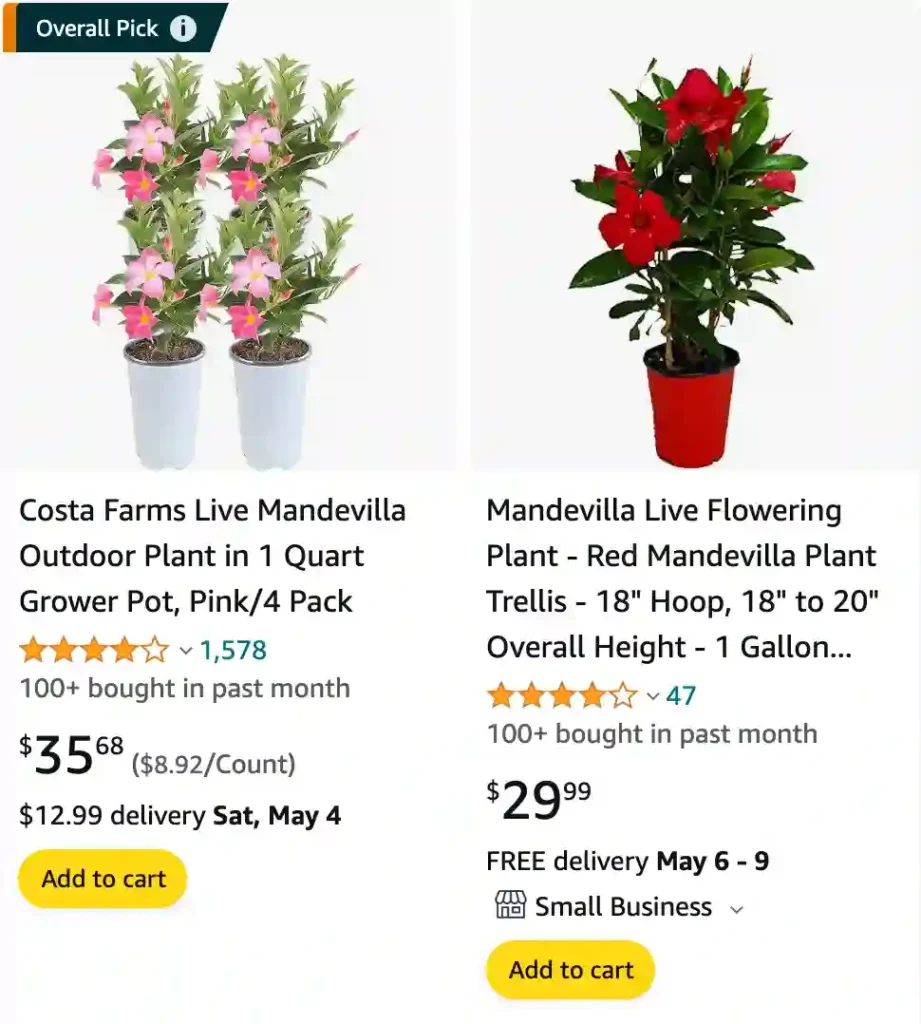
February 17 – Mandevilla
"Mandevilla, the elegant climber, represents February 17."
This vine’s vibrant flowers symbolize determination and beauty. You are tenacious and optimistic, climbing to new heights with confidence and style.
Mandevilla: A Tropical Vine That Captured My Heart
I’m Ferb Vu, and I’ve always been drawn to the vibrant colors and exotic beauty of tropical flowers. But there’s one genus that truly captured my heart: Mandevilla. These stunning vines belong to the Apocynaceae family, with their glossy leaves and trumpet-shaped blooms, bring a touch of the tropics to any garden or home.
Discovering the Diversity of Mandevilla
My fascination with Mandevilla began with a single, crimson-flowered plant I purchased on a whim. As I learned more about this captivating genus, I discovered a world of diverse species, each with its own unique charm. From the classic pink hues of Mandevilla sanderi to the bold, red blossoms of Mandevilla splendens, there’s a Mandevilla to suit every taste.
Here are:
- Mandevilla abortiva J.F.Morales
- Mandevilla acutiloba (A.DC.) Woodson
- Mandevilla aequatorialis J.F.Morales
- Mandevilla albifolia J.F.Morales
- Mandevilla alboviridis (Rusby) Woodson
- Mandevilla alexicaca (Mart. ex Stadelm.) J.F.Morales & A.Fuentes
- Mandevilla amazonica J.F.Morales
- Mandevilla anceps Woodson
- Mandevilla andina J.F.Morales & A.Fuentes
- Mandevilla angustata (Steyerm.) J.F.Morales
- Mandevilla angustifolia (Malme) Woodson
- Mandevilla annulariifolia Woodson
- Mandevilla antioquiana J.F.Morales
- Mandevilla apocynifolia (A.Gray) Woodson
- Mandevilla aracamunensis Morillo
- Mandevilla arcuata A.H.Gentry
- Mandevilla arenicola J.F.Morales
- Mandevilla aridana J.F.Morales
- Mandevilla assimilis (K.Schum.) J.F.Morales
- Mandevilla athenastigma J.F.Morales & I.L.Morais
- Mandevilla atroviolacea (Stadelm.) Woodson
- Mandevilla bahiensis (Woodson) M.F.Sales & Kin.-Gouv.
- Mandevilla benthamii (A.DC.) K.Schum.
- Mandevilla bogotensis (Kunth) Woodson
- Mandevilla boliviensis (J.Veitch f.) Woodson
- Mandevilla brachyloba (Müll.Arg.) K.Schum.
- Mandevilla brachysiphon (Torr.) Pichon
- Mandevilla bracteata (Kunth) Kuntze
- Mandevilla bullata J.F.Morales & L.Kollmann
- Mandevilla calcicola J.F.Morales, M.E.Endress & I.L.Morais
- Mandevilla callacatensis Markgr.
- Mandevilla callista Woodson
- Mandevilla caquetana J.F.Morales
- Mandevilla catimbauensis Souza-Silva, Rapini & J.F.Morales
- Mandevilla caurensis Markgr.
- Mandevilla cercophylla Woodson
- Mandevilla clandestina J.F.Morales
- Mandevilla coccinea (Hook. & Arn.) Woodson
- Mandevilla columbiana J.F.Morales
- Mandevilla convolvulacea (A.DC.) Hemsl.
- Mandevilla crassinoda (Gardner) Woodson
- Mandevilla cuneifolia Woodson
- Mandevilla dardanoi M.F.Sales, Kin.-Gouv. & A.O.Simões
- Mandevilla declinata J.F.Morales, A.P.Fontana & L.Kollmann
- Mandevilla dissimilis Woodson
- Mandevilla duartei Markgr.
- Mandevilla duidae (Woodson) Woodson
- Mandevilla emarginata (Vell.) C.Ezcurra
- Mandevilla equatorialis Woodson
- Mandevilla espinosae Woodson
- Mandevilla exilicaulis (Sessé & Moc.) J.K.Williams
- Mandevilla eximia (Hemsl.) Woodson
- Mandevilla filifolia Monach.
- Mandevilla fistulosa M.F.Sales, Kin.-Gouv. & A.O.Simões
- Mandevilla foliosa (Müll.Arg.) Hemsl.
- Mandevilla fornograndensis J.F.Morales, L.Kollmann & Fraga
- Mandevilla fragilis Woodson
- Mandevilla fragrans (Stadelm.) Woodson
- Mandevilla frigida J.F.Morales
- Mandevilla funiformis (Vell.) K.Schum.
- Mandevilla glandulosa (Ruiz & Pav.) Woodson
- Mandevilla gracilis (Kunth) J.F.Morales
- Mandevilla grata Woodson
- Mandevilla grazielae M.F.Sales, Kin.-Gouv. & A.O.Simões
- Mandevilla guanabarica Casar. ex M.F.Sales, Kin.-Gouv. & A.O.Simões
- Mandevilla guerrerensis Lozada-Pérez & Diego
- Mandevilla harleyi M.F.Sales, Kin.-Gouv. & A.O.Simões
- Mandevilla hatschbachii M.F.Sales, Kin.-Gouv. & A.O.Simões
- Mandevilla hesperia (I.M.Johnst.) A.O.Simões, Kin.-Gouv. & M.E.Endress
- Mandevilla hirsuta (Rich.) K.Schum.
- Mandevilla holosericea (Sessé & Moc.) J.K.Williams
- Mandevilla holstii Morillo
- Mandevilla horrida J.F.Morales
- Mandevilla huberi Morillo
- Mandevilla hypoleuca (Benth.) Pichon
- Mandevilla illustris (Vell.) Woodson
- Mandevilla immaculata Woodson
- Mandevilla inexperata J.F.Morales
- Mandevilla jamesonii Woodson
- Mandevilla jasminiflora Woodson
- Mandevilla javitensis (Kunth) K.Schum.
- Mandevilla kalmiifolia (Woodson) J.F.Morales
- Mandevilla krukovii Woodson
- Mandevilla lancibracteata Woodson
- Mandevilla lancifolia Woodson
- Mandevilla lanuginosa (M.Martens & Galeotti) Pichon
- Mandevilla laxa (Ruiz & Pav.) Woodson Plant FAQs: Mandevilla Laxa
- Mandevilla leptophylla (A.DC.) K.Schum.
- Mandevilla ligustriflora Woodson
- Mandevilla lobbii Woodson
- Mandevilla lojana J.F.Morales
- Mandevilla longiflora (Desf.) Pichon
- Mandevilla longipes Woodson
- Mandevilla lucida Woodson
- Mandevilla luetzelburgii (H.Ross & Markgr.) Woodson
- Mandevilla macrosiphon (Torr.) Pichon
- Mandevilla manicorensis C.A.Coelho, B.S.Amorim & J.F.Morales
- Mandevilla martiana (Stadelm.) Woodson
- Mandevilla martii (Müll.Arg.) Pichon
- Mandevilla matogrossana J.F.Morales
- Mandevilla megabracteata J.F.Morales
- Mandevilla mexicana (Müll.Arg.) Woodson
- Mandevilla microphylla (Stadelm.) M.F.Sales & Kin.-Gouv.
- Mandevilla mollissima (Kunth) K.Schum.
- Mandevilla montana (Kunth) Markgr.
- Mandevilla moricandiana (A.DC.) Woodson
- Mandevilla moritziana (Müll.Arg.) Donn.Sm.
- Mandevilla muelleri Woodson
- Mandevilla myriophylla (Taub. ex Ule) Woodson
- Mandevilla mysteriosa J.F.Morales, A.P.Fontana & Fraga
- Mandevilla nacapulensis (Felger & Henrickson) A.O.Simões, Kin.-Gouv. & M.E.Endress
- Mandevilla nacarema J.F.Morales
- Mandevilla nerioides Woodson
- Mandevilla nevadana J.F.Morales
- Mandevilla novocapitalis Markgr.
- Mandevilla oaxacana (A.DC.) Hemsl.
- Mandevilla oaxacensis (Henrickson) L.O.Alvarado & J.F.Morales
- Mandevilla obovata J.F.Morales, A.P.Fontana & Fraga
- Mandevilla obtusifolia Monach.
- Mandevilla pachyphylla Woodson
- Mandevilla paisae J.F.Morales
- Mandevilla pavonii (A.DC.) Woodson
- Mandevilla pendula (Ule) Woodson
- Mandevilla pentlandiana (DC.) Woodson
- Mandevilla petraea (A.St.-Hil.) Pichon
- Mandevilla platydactyla Woodson
- Mandevilla pohliana (Stadelm.) A.H.Gentry
- Mandevilla polyantha K.Schum. ex Woodson
- Mandevilla pristina J.F.Morales
- Mandevilla pubescens (Willd. ex Roem. & Schult.) J.F.Morales
- Mandevilla puyumato J.F.Morales
- Mandevilla pycnantha (Steud.) Woodson
- Mandevilla riparia (Kunth) Woodson
- Mandevilla rubra Markgr. ex M.F.Sales, Kin.-Gouv. & A.O.Simões
- Mandevilla rugellosa (Rich.) L.Allorge
- Mandevilla sagittarii Woodson
- Mandevilla sancta (Stadelm.) Woodson
- Mandevilla sancta-martae J.F.Morales
- Mandevilla sandemanii Woodson
- Mandevilla sanderi (Hemsl.) Woodson Plant FAQs: Mandevilla Sanderi – Brazilian Jasmine
- Mandevilla sandwithii Woodson
- Mandevilla scaberula N.E.Br.
- Mandevilla scabra (Hoffmanns. ex Roem. & Schult.) K.Schum.
- Mandevilla schlimii (Müll.Arg.) Woodson
- Mandevilla scutifolia Woodson
- Mandevilla sellowii (Müll.Arg.) Woodson
- Mandevilla semirii M.F.Sales, Kin.-Gouv. & A.O.Simões
- Mandevilla sherlockii L.O.Alvarado & Lozada-Pérez
- Mandevilla similaris J.F.Morales
- Mandevilla speciosa (Kunth) J.F.Morales
- Mandevilla spigeliiflora (Stadelm.) Woodson
- Mandevilla splendens (Hook.f.) Woodson Plant FAQs: Mandevilla Splendens
- Mandevilla steyermarkii Woodson
- Mandevilla subcarnosa (Benth.) Benth. & Hook.f. ex B.D.Jacks.
- Mandevilla subcordata Rusby
- Mandevilla subsagittata (Ruiz & Pav.) Woodson
- Mandevilla subsessilis (A.DC.) Woodson
- Mandevilla subumbelliflora J.F.Morales
- Mandevilla surinamensis (Pulle) Woodson
- Mandevilla symphitocarpa (G.Mey.) Woodson
- Mandevilla tenuifolia (J.C.Mikan) Woodson
- Mandevilla thevetioides Woodson
- Mandevilla torosa (Jacq.) Woodson
- Mandevilla trianae Woodson
- Mandevilla tricolor Woodson
- Mandevilla tristis J.F.Morales
- Mandevilla tubiflora (M.Martens & Galeotti) Woodson
- Mandevilla turgida Woodson
- Mandevilla ulei K.Schum. ex Markgr.
- Mandevilla undulata (C.Ezcurra) A.O.Simões, Kin.-Gouv. & M.E.Endress
- Mandevilla urceolata Markgr.
- Mandevilla urophylla (Hook.) Woodson
- Mandevilla vanheurckii (Müll.Arg.) Benth. & Hook.f. ex B.D.Jacks.
- Mandevilla vasquezii J.F.Morales
- Mandevilla velame (A.St.-Hil.) Pichon
- Mandevilla venulosa (Müll.Arg.) Woodson
- Mandevilla veraguasensis (Seem.) Hemsl.
- Mandevilla versicolor Woodson
- Mandevilla villosa (Miers) Woodson
- Mandevilla virescens (A.St.-Hil.) Pichon
- Mandevilla widgrenii C.Ezcurra
- Mandevilla xerophytica J.F.Morales
Are mandevillas poisonous to dogs?
You wouldn’t believe the scare I got last summer! My neighbor has these beautiful mandevilla vines overflowing with pink flowers cascading down her porch. They’re so pretty, but then my pup, Milo, decided to investigate a bit too closely. Luckily, I caught him just as he was about to take a chomp. It freaked me out – after some frantic Googling, I learned mandevillas can be toxic to dogs. Milo didn’t seem to have any ill effects, but that incident definitely made me keep a watchful eye whenever we’re near those flowers!
Do deer eat mandevilla?
Thankfully, my mandevilla seems to be safe from our resident deer family! I planted them specifically because I heard they were deer-resistant. It’s a relief because those deer can be relentless with my rose bushes. Maybe it’s the milky sap in the mandevilla leaves that deters them? I’m not sure, but I’m grateful they prefer to leave my beautiful flowering vines alone. It’s a win-win – gorgeous flowers and no deer chomping them down!
Do hummingbirds like mandevilla?
Absolutely! Every year, I plant mandevilla vines in hanging baskets on my porch, and they’re a hummingbird magnet. It’s fascinating to watch them hover in mid-air, their wings buzzing furiously, as they reach for the nectar deep inside the trumpet-shaped flowers. The bright blooms seem to draw them in, and I love the cheerful chirp they make as they flit between the vines. It feels like having tiny, feathered friends visit for a sweet treat every day.
How to propagate mandevilla?
I’ve had great success propagating mandevilla from stem cuttings. It’s a fun way to get more plants for free, and it’s surprisingly easy! In the spring, I take healthy stems that aren’t too thin or woody. I make sure to cut just below a leaf node, where roots like to grow from. Then, I strip off most of the lower leaves, leaving just a couple at the top. Dipping the cut end in rooting hormone isn’t essential, but I find it helps sometimes. Finally, I plant the cuttings in a pot with well-draining potting mix, keep the soil moist, and cover the pot with a plastic bag to create a humid environment. In a few weeks, I usually see new growth, which means roots have formed! It’s like witnessing a little miracle every time.
Are mandevilla poisonous to cats?
Oh man, this is why I keep those hanging baskets out of reach of my cat, Mittens. Mandevilla might look harmless, but I learned the hard way it’s not cat-friendly. Last year, Mittens got curious and nibbled on a leaf when I wasn’t looking. Thankfully, she only threw up a bit and seemed uncomfortable for a day. It scared me though! Since then, I make sure my mandevilla plants are well out of her climbing range. It’s not worth the risk. Maybe some cats wouldn’t be bothered, but I’d rather play it safe. If you have a curious kitty like Mittens, best to choose different plants for your home.
Do mandevillas climb?
You bet they do! Mandevilla vines are natural climbers, and that’s what makes them so much fun in my garden. They love to sprawl and reach upwards, their long stems searching for something to grab onto. Last year, I trained one of my vines up a trellis I put next to my porch swing. It looked amazing, with these beautiful red flowers cascading down. It’s like having a living curtain of blooms! They’re not super aggressive climbers, but they’ll definitely grow towards anything nearby. If you don’t want them to climb, you can prune them to keep them bushier. But for me, the climbing is part of their charm.
How to propagate a mandevilla?
I’ve had great success propagating mandevilla from stem cuttings. It’s a fun way to get more plants for free, and it’s surprisingly easy! In the spring, I take healthy stems that aren’t too thin or woody. I make sure to cut just below a leaf node, where roots like to grow from. Then, I strip off most of the lower leaves, leaving just a couple at the top. Dipping the cut end in rooting hormone isn’t essential, but I find it helps sometimes. Finally, I plant the cuttings in a pot with well-draining potting mix, keep the soil moist, and cover the pot with a plastic bag to create a humid environment. In a few weeks, I usually see new growth, which means roots have formed! It’s like witnessing a little miracle every time.
Why are my mandevilla leaves turning yellow?
There could be a couple of reasons why your mandevilla leaves are turning yellow. Let’s think through it together. Has it been raining a lot lately? Mandevilla likes moist soil, but not soggy feet. If the pot doesn’t have good drainage, or you’ve been watering extra heavily, the roots might be sitting in water. That can turn leaves yellow. On the other hand, maybe we’ve been having a dry spell. Mandevilla doesn’t like to completely dry out either. If the leaves are feeling brittle and curling at the edges, that could be a sign it’s thirsty. Let’s check the soil moisture and see if that might be the culprit!
How to prune mandevilla?
Pruning my mandevilla is like giving it a haircut! It helps it stay healthy, encourages bushier growth, and keeps it blooming beautifully. Here’s what I usually do:
- Timing is key: I wait until late winter or early spring, before new growth explodes.
- Sharp tools: I make sure my pruners are sharp and clean to avoid damaging the stems.
- Healthy cuts: I cut just above a leaf node, where the plant naturally wants to branch out.
- Be bold (but not too bold): For size control, I’m not afraid to cut back the vines by about half. This sounds scary, but the mandevilla bounces back quickly.
- Shape it up: I also trim any dead or leggy growth to keep the plant looking neat.
- Pinching potential: If I see any long, new shoots during the growing season, I might pinch off the tips to encourage bushier growth and more flowers. But I go easy on these since they’re where the blooms come from!
Following these steps, I’ve been able to keep my mandevilla happy and blooming all season long. It’s rewarding to see it respond to a little pruning with a flourish of new growth and flowers!
Why is my mandevilla not blooming?
There could be a few reasons why your mandevilla isn’t blooming! Let’s troubleshoot together like we’re detectives on the case of the missing flowers.
First, we need to consider sunlight. Mandevilla is a sun worshiper, needing at least 6 hours of good light a day. If it’s stuck in a shady corner, it might not be getting enough energy to produce blooms.
Second, on the flip side, too much harsh afternoon sun can also stress the plant and hinder flowering. Maybe it needs some protection during the hottest part of the day.
Next, let’s think about watering. Mandevilla likes consistently moist soil, but not soggy. If it’s constantly parched or swimming in water, it might not be happy enough to flower. Sticking your finger in the soil to check moisture before watering can help.
Also, have you been fertilizing? Mandevilla needs nutrients to fuel flower production. A balanced fertilizer formulated for flowering plants might be the missing ingredient. But don’t go overboard, too much fertilizer can backfire.
Lastly, pruning can affect blooms too. If you pruned too heavily recently, the plant might be focusing its energy on recovering instead of flowering. Don’t worry, with a little TLC and some adjustments, your mandevilla should be back to blooming glory in no time!
Does mandevilla attract hummingbirds?
You bet it does! My mandevilla vines are practically hummingbird magnets every year. The bright, trumpet-shaped flowers are like beacons for these little feathered jewels. It’s fascinating to watch them hover in mid-air, their wings buzzing furiously, as they reach for the nectar deep inside the blooms. The red and pink flowers seem to attract them the most in my experience. It’s become such a joy to see them flitting between the vines, and I love the cheerful chirp they make. It feels like having tiny, feathered friends visit for a sweet treat every day. If you’re looking to attract hummingbirds to your garden, mandevilla is a surefire winner!
How often water mandevilla?
Watering my mandevilla depends on the weather and the pot it’s in. Here’s my general approach:
- Finger test: The key is to avoid extremes – both soggy soil and completely dry roots. So, I stick my finger into the potting mix about an inch deep. If it feels dry to the touch, it’s watering time. If it feels moist, I hold off.
- Hot and sunny days: During hot spells, especially when my mandevilla is in a pot made of terracotta (which dries out faster), I might need to water every other day. Plastic pots retain moisture better, so watering every few days might suffice.
- Cooler weather: In cooler weather, or when it’s been raining consistently, watering needs decrease. I might only need to water once a week, or even less.
It’s always better to err on the side of underwatering than overwatering. Mandevilla can bounce back from a little drought, but soggy roots can lead to root rot. So, observing your plant and its specific conditions is the best way to determine watering frequency.
How to care for mandevilla in pots?
Caring for a potted mandevilla is pretty rewarding! Here’s what I’ve learned from my experience:
Sunshine is key: These sun-loving plants need at least 6 hours of direct sunlight a day. A south-facing spot on your patio or balcony would be ideal. Without enough light, they might not flower as much.
Pick the right pot: Make sure your pot has good drainage holes. Sitting in water is a recipe for disaster for mandevilla. A pot with a diameter of at least 12 inches should give your roots enough room to grow. As your plant matures, you might need to repot it into a slightly larger container every spring.
Watering woes: Mandevilla likes consistently moist soil, but not soggy. Finding the balance can be tricky! Sticking your finger in the pot about an inch deep is a good way to check. Water thoroughly when the top inch feels dry, and let the excess water drain out the holes completely.
Feeding time: During the growing season, from spring to fall, I like to feed my mandevilla a balanced fertilizer for flowering plants every two weeks or so. A diluted solution is best, don’t go overboard! In the winter, they don’t need feeding as much.
Pruning for perfection: Pruning helps keep your mandevilla bushy and encourages more blooms. The best time to prune is in late winter or early spring, before new growth appears. Just snip off leggy stems and cut back longer vines by about half. You can also pinch off the tips of new shoots during the growing season to promote bushier growth.
Be mindful of the chill: Mandevilla isn’t a fan of frost. If you live in a climate with cool winters, bring your potted mandevilla indoors to a sunny spot before the first frost hits. Water it sparingly during the winter months.
With a little sunshine, the right watering routine, and some occasional feeding and pruning, your potted mandevilla should reward you with a stunning display of blooms all season long!
When does mandevilla bloom?
My mandevilla puts on a fantastic blooming show for a good chunk of the year! They’re like tropical party throwers, always ready to flower. Here’s a breakdown of what I can expect:
- Early bloomers: In ideal conditions, with warm weather kicking in, I can sometimes see the first blooms as early as late spring. That’s a delightful surprise!
- Peak blooming season: The real party starts in early summer and continues all the way through fall. During this time, my mandevilla is typically covered in a profusion of beautiful blooms. It’s a feast for the eyes!
- Year-round bloomer (almost): If you live in a frost-free climate, lucky you! Mandevilla can pretty much be a year-round bloomer in those warmer zones. Mine might slow down a bit in the cooler winter months, but with some care, it can still surprise me with the occasional bloom.
Here’s the thing to remember – even though they’re enthusiastic bloomers, a little extra TLC can go a long way. Making sure they have enough sunlight, water at the right frequency, and some occasional fertilizer can really influence how long and how abundantly they flower. But even with a bit less care, they’re still reliable bloomers that will add a pop of color to your garden or patio.
Will mandevilla come back?
Whether your mandevilla comes back depends on where you live and how you care for it over the winter. Here’s the breakdown:
- Tropical Paradise: If you live in a frost-free climate (think USDA zones 9 and above), then congratulations! Your mandevilla is a perennial and should come back year after year. It might lose some leaves in the cooler months, but with proper care, it should bounce back in spring with fresh growth and blooms.
- Bring it Inside: For those of us in colder climates, mandevilla can be treated as an annual. But don’t despair! You can bring your potted mandevilla indoors before the first frost. Give it a sunny spot and water it sparingly throughout the winter. Come spring, with some TLC, it should wake up from its winter nap and start growing again. You might even get some blooms indoors during the winter months if there’s enough light.
- Trying its Luck: In some cases, if you’re in a colder climate but have a sheltered spot, you can try planting your mandevilla directly in the ground and protect it with a thick layer of mulch over winter. There’s a chance it might survive, but it’s a bit of a gamble.
So, the answer depends on your climate and your plan. But with a little know-how, you can enjoy your mandevilla’s beauty for many seasons to come!
How to pronounce mandevilla?
Saying “mandevilla” can be a bit of a tongue twister! Here’s how I pronounce it:
- Man-de-VILE-la (emphasis on the VILE)
Break it down into syllables:
- Man – like the word “man”
- de – like the first syllable in “decide” (short e sound)
- VILE – like “vile,” with the emphasis on this syllable and a long i sound
- la – like “la” in “salsa” (short a sound)
Here are some tips that might help:
- Practice saying each syllable separately at first, then put them together slowly.
- Think about the “vile” in the middle – that’s where the emphasis is.
- Listen to online pronunciations or watch videos of people saying “mandevilla” to get the sound just right.
Don’t worry, it might take a few tries to get it perfect. But hey, even if you stumble a bit on the pronunciation, your beautiful mandevilla will still steal the show!
What does an overwatered mandevilla look like?
An overwatered mandevilla will start showing some distress signals, and the good news is you can often catch it before it’s too late. Here’s what to watch out for:
- Drooping leaves: This is a classic sign of unhappy roots. Mandevilla leaves will wilt and droop if they’re sitting in soggy soil for too long. The droop might be general or more noticeable on the lower leaves first.
- Yellowing leaves: Leaves that are turning yellow and dropping can also be a sign of overwatering. If the yellowing is widespread and accompanied by drooping, it’s more likely a water issue than a nutrient deficiency.
- Leaf drop: In severe cases of overwatering, the leaves might not just yellow, they might actually fall off the plant. This is a sign the roots are struggling and can’t support the foliage.
- Stem problems: The stems themselves might also suffer. They might feel soft and mushy instead of firm and green. This is a bad sign and can indicate stem rot caused by excessive moisture.
- No blooms: While underwatering can also affect flowering, a lack of blooms on an otherwise healthy-looking mandevilla could be a clue that it’s been overwatered. The plant is focusing its energy on survival instead of producing flowers.
Remember: It’s always better to underwater than overwater your mandevilla. If you see a few signs of these issues, check the soil moisture. If it feels soggy, hold off on watering and let the plant dry out a bit. You might also need to consider repotting the mandevilla with fresh, well-draining potting mix if the roots are badly affected. With a little intervention, you can hopefully bring your mandevilla back to health!
How to get mandevilla to bloom again?
There can be a few reasons why your mandevilla isn’t flowering, but don’t worry, with some detective work, we can get it blooming again! Here are some things to consider:
- Sunshine Superstar: Mandevilla is a sun worshiper! They need at least 6 hours of direct sunlight a day to set flower buds. If your plant is tucked away in a shady corner, it might not be getting enough energy to bloom. Try moving it to a sunnier spot.
- Feeding Frenzy: Is your mandevilla getting the nutrients it needs to bloom? During the growing season (spring to fall), a balanced fertilizer formulated for flowering plants can be a big help. But don’t overdo it! Too much fertilizer can be counterproductive. A diluted solution every two weeks or so should be sufficient.
- Pruning Power: Believe it or not, pruning can actually encourage blooming! Regular pruning helps keep the plant bushy and directs its energy towards flower production. The best time to prune is in late winter or early spring, before new growth appears. Cut back leggy stems and long vines by about half. You can also pinch off the tips of new shoots during the growing season to promote more blooms.
- Water Woes: Finding the right watering balance is key. Mandevilla likes consistently moist soil, but not soggy roots. Underwatering can definitely affect flowering, but so can overwatering. Stick your finger in the soil to check moisture. Water thoroughly when the top inch feels dry and let the excess water drain out completely.
- The Age Game: Younger mandevilla plants typically flower more readily than older ones. If your plant is several years old and hasn’t bloomed in a while, it might be time to consider propagating a new plant from a cutting.
By addressing these potential issues and giving your mandevilla a little TLC, you should see those beautiful blooms again soon! Remember, a little sunshine, the right watering routine, some fertilizer during the growing season, and strategic pruning can work wonders. Happy blooming!
Is dipladenia the same as mandevilla?
In the gardening world, dipladenia and mandevilla can be confusing because they’re so closely related. Here’s the breakdown:
- Officially: Mandevilla is the current, botanically correct name for the genus. Dipladenia used to be a separate genus, but they were reclassified together some time ago.
- Nicknames: However, “dipladenia” is still a widely used common name for these plants, especially for the bushier varieties. So, gardeners often use both names interchangeably.
- Appearance: There are some slight differences in appearance. Mandevilla tends to be more vining, while dipladenia can be bushier with a fuller shape. But the beautiful trumpet-shaped flowers are very similar on both.
Here’s the key takeaway: Don’t worry too much about the exact name. Whether you call it a mandevilla or a dipladenia, you’re taking care of a beautiful flowering plant! They both have the same basic needs for sunshine, watering, and feeding.
What colors do mandevillas come in?
Mandevilla comes in a wide range of colors, but the most common ones are red, pink, white, and yellow. Here are some of the colors you can find mandevilla in:
- Red:Red mandevilla varieties produce blooms in various shades of red, from bright cherry red to deep crimson.
- Pink:Pink mandevilla flowers come in a spectrum of pinks, from soft blush to deep fuchsia.
- White:White mandevilla varieties boast blooms that are pure white or sometimes have a touch of yellow in the center.
- Yellow: Yellow mandevilla flowers are not as common as the other colors, but they can add a cheerful pop of sunshine to your garden.
- Apricot:A more recent addition to the mandevilla color palette is a beautiful apricot shade.
There are also bi-colored mandevilla varieties that combine two of these colors, such as pink and white or red and yellow.
Where to buy mandevilla plants?
There are a few places you can look to buy mandevilla plants, both online and in person. Here are a couple of options:
- Local nurseries and garden centers: These are a great place to find mandevilla plants, especially during the spring and summer months. You can browse the selection in person and get advice from the staff on choosing the right variety for your needs.
- Online retailers: Several online retailers sell mandevilla plants, including Amazon, Walmart, and some specialty plant stores. This can be a convenient option, but you won’t be able to inspect the plant before you buy it.
Here’s a tip: When buying mandevilla, look for a healthy plant with plenty of green foliage and flower buds. Avoid plants with yellowing leaves, wilting stems, or signs of pests or diseases.
If i die, water my plants!
